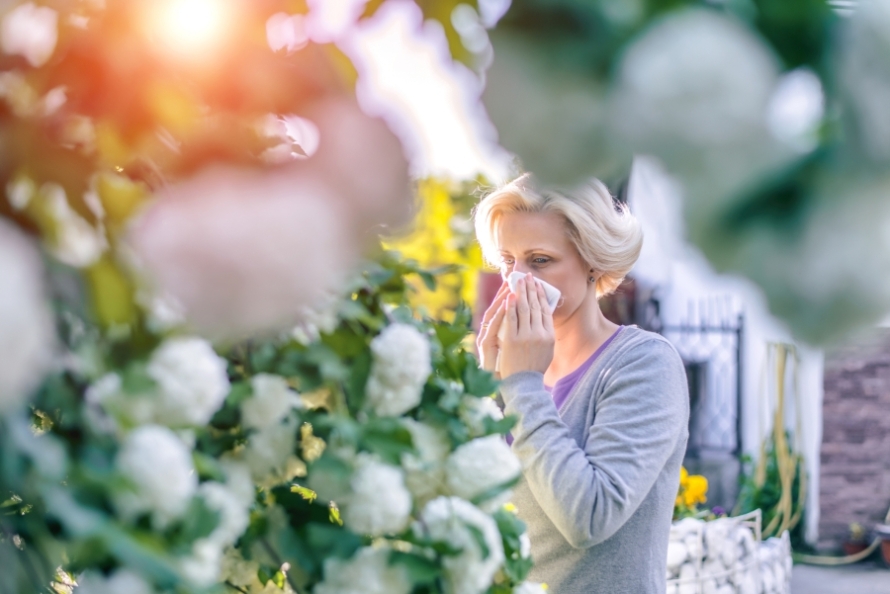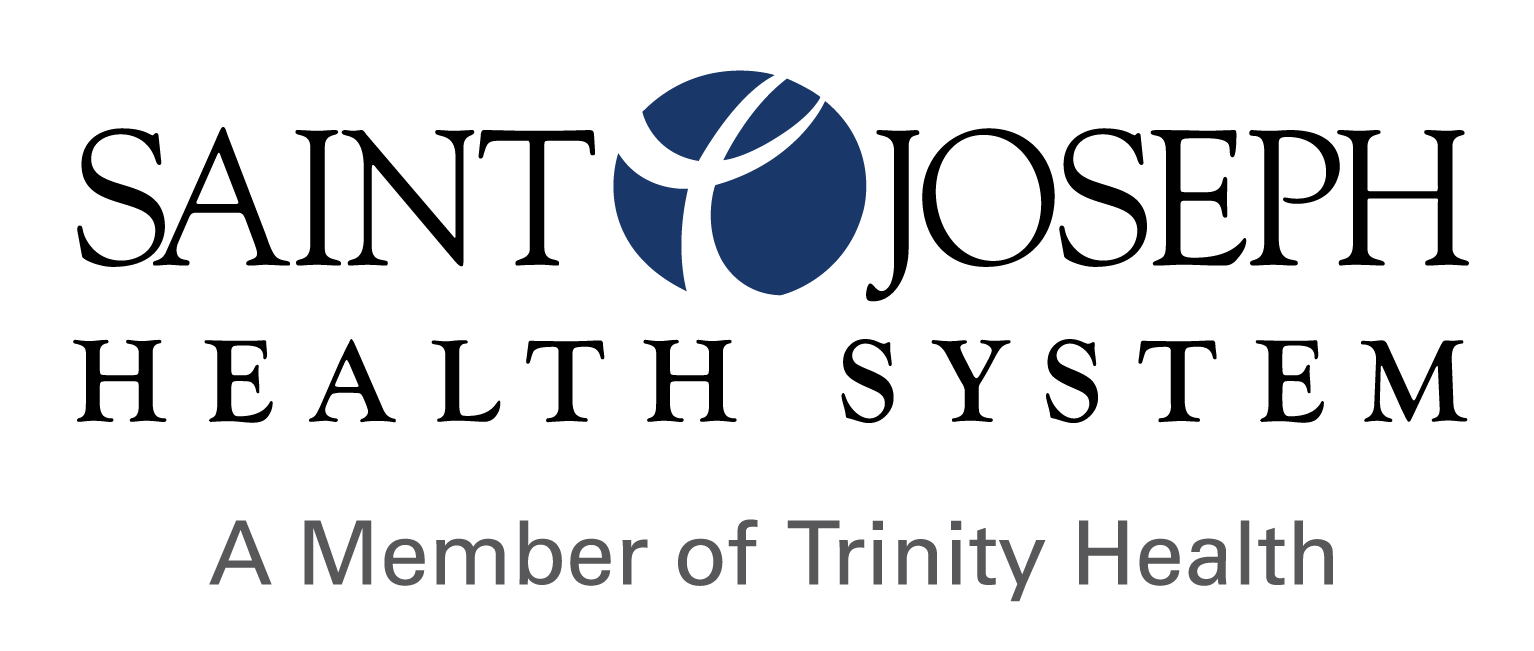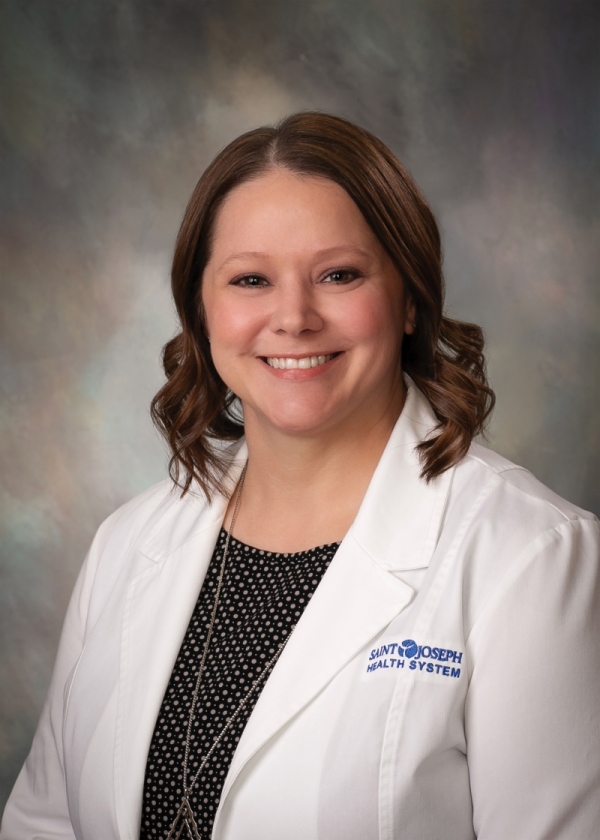Understanding and Managing Seasonal Allergies: Your Guide to Relief This Spring
April 21, 2025
By: Brandi Brown, NP
As trees bud, flowers bloom, and lawns get their first trim of the year, millions of Americans brace for another seasonal milestone: allergy season. If you’ve ever found yourself sniffling and sneezing your way through spring, summer, or fall, you’re far from alone. Seasonal allergies affect up to 30% of adults and 40% of children in the United States.
To help navigate this sneezy season, Brandi Brown, NP, from Saint Joseph Health System breaks down the causes, symptoms, and treatment options for seasonal allergies, along with expert tips to breathe a little easier.
What are seasonal allergies and why do they happen?
Seasonal allergies, also known as hay fever or seasonal allergic rhinitis, occur when your body’s immune system reacts to allergens in the environment. These allergens are typically harmless substances like pollen, mold spores, and dust mites, but in allergic individuals, they trigger an overreaction in the immune system.
“These types of allergies are related more to environmental factors,” explained Brown. “Pollen, dust mites, grass, and mold, especially when the air is humid or after it rains, are some of the biggest culprits we see seasonally.”
Each season brings its own set of allergens:
- Spring: Tree pollens such as oak, birch, and maple are most active.
- Summer: Grass pollens take over, particularly from Bermuda, Timothy, and ryegrass.
- Fall: Weeds like ragweed dominate, and mold spores thrive in fallen leaves and damp environments.
Interestingly, not everyone is susceptible to these allergens in the same way.
“Essentially, for a person to develop seasonal allergies, their immune system needs repeated exposure to allergens over time. Since children under the age of two haven’t had multiple seasons of exposure, their bodies typically haven’t had enough time to become sensitized and start showing allergic reactions. So, if a child under two seems to have symptoms like sneezing or a runny nose, it’s more likely due to a cold or another irritant than true seasonal allergies," Brown says.
Allergies or a cold? How to tell the difference
One of the most confusing parts of seasonal allergies is that their symptoms often mimic those of a cold or even the flu or COVID-19. So how do you know what you’re really dealing with?
“Allergies usually don’t cause a fever. Symptoms like body aches or shortness of breath could indicate a more serious illness," Brown says.
Seasonal allergies usually include sneezing, nasal congestion, runny nose, itchy eyes, and postnasal drip. Symptoms persist and may last for weeks or months. However, colds often bring sore throat, fatigue, mild body aches, and sometimes a low-grade fever. Symptoms typically resolve within 7 to 10 days.
If your symptoms don’t improve with allergy medications or persist beyond typical seasonal triggers, it’s a good idea to check in with your healthcare provider.
First-line treatments and why some medications work better than others
There’s no shortage of over-the-counter medications for allergies, but knowing what actually works can make a big difference in how well you manage symptoms. It's important to start with the basics, particularly nasal saline rinses.
“My biggest recommendation is nasal saline,” she said. “A neti pot or squeeze bottle helps flush out allergens and mucus from your nasal passages. It’s more effective than just using a spray, and it sets the stage for other medications to work better.”
“Always use sterile, distilled, or previously boiled water for saline rinses—not tap water.” Brown warned that “tap water can contain harmful organisms, which are safe to drink but risky to put in your sinuses.”
For medications, there are numerous options, including:
- First-line medication: Steroid nasal sprays which directly target nasal inflammation, reducing symptoms like congestion, sneezing, and runny nose
- Add-on treatment: Antihistamine nasal sprays for added relief.
- Oral antihistamines: Like loratadine, cetirizine, or fexofenadine help relieve itching, sneezing, and runny nose by blocking the effects of histamine, a chemical released during an allergic reaction.
There are also options to avoid, such as older antihistamines like diphenhydramine, especially in children
“We’ve steered away from Benadryl in pediatrics,” Brown said. “It has too many side effects and even carries a risk of severe reactions. Newer medications are safer and more effective.”
Proper technique also matters when taking medication, particularly with nasal sprays.
“If you taste it, you waste it,” Brown said. “If you’re tasting it in the back of your throat, it’s not being absorbed where it needs to be. When inserted into your nasal passage, aim toward the outer corner of your eye, not the center of your nose.”
When to consider allergy testing or immunotherapy
If you’ve tried all the basics, rinses, sprays, oral medications, and your symptoms still disrupt your daily life, it may be time to see an allergist. Testing can pinpoint your specific triggers and open the door to more targeted treatment options.
“If the usual treatments aren’t working, especially after trying both nasal steroids and antihistamines, then it’s worth getting tested,” said Brown. “Allergy shots or immunotherapy may be recommended.”
The most common form of immunotherapy can be delivered as allergy shots which are administered regularly at a provider’s office. They are designed to retrain your immune system and reduce your allergic response over time, offering longer-term relief that medications alone can’t always provide.
Protecting yourself: How to reduce allergen exposure
Even with medication, avoiding allergens can significantly reduce your symptoms. There are many things you can do to mitigate your risk, such as:
- Keep windows closed.
- Change clothes and shower after being outside.
- Use a mask, especially during yard work.
- Rinse your nasal passages before bed.
- Use air filters, especially HEPA filters, to purify indoor air.
It’s also worth checking daily pollen forecasts. Avoid going outside in the early morning or late afternoon, when pollen counts tend to peak.
Treating Children’s Allergies
Pediatric allergies can be especially tricky to manage. Young children can’t always communicate their symptoms, and traditional treatments aren’t always suitable.
“We start with nasal saline sprays or drops in babies,” Brown shared. “Once children can breathe through their mouth during a nasal rinse, it’s even more effective—it helps clear out mucus and allergens and boosts the impact of other treatments.”
She also emphasized that oral allergy medications can be used starting at 6 months of age, and inhaled nasal steroids at 2 years, under pediatric supervision.
If you're struggling with persistent symptoms or looking for expert guidance, don't hesitate to schedule an appointment with a provider at Saint Joseph Health System.

